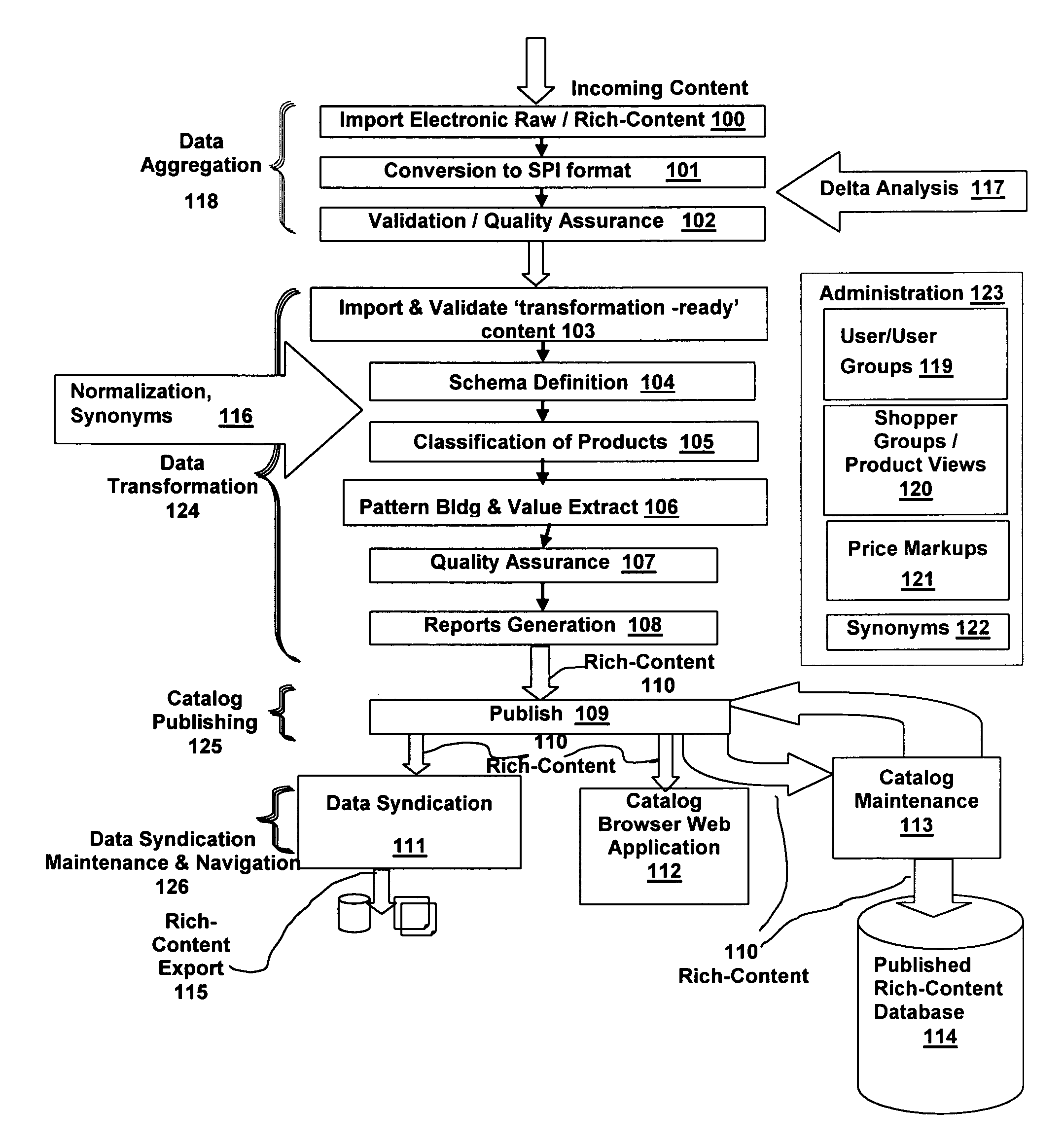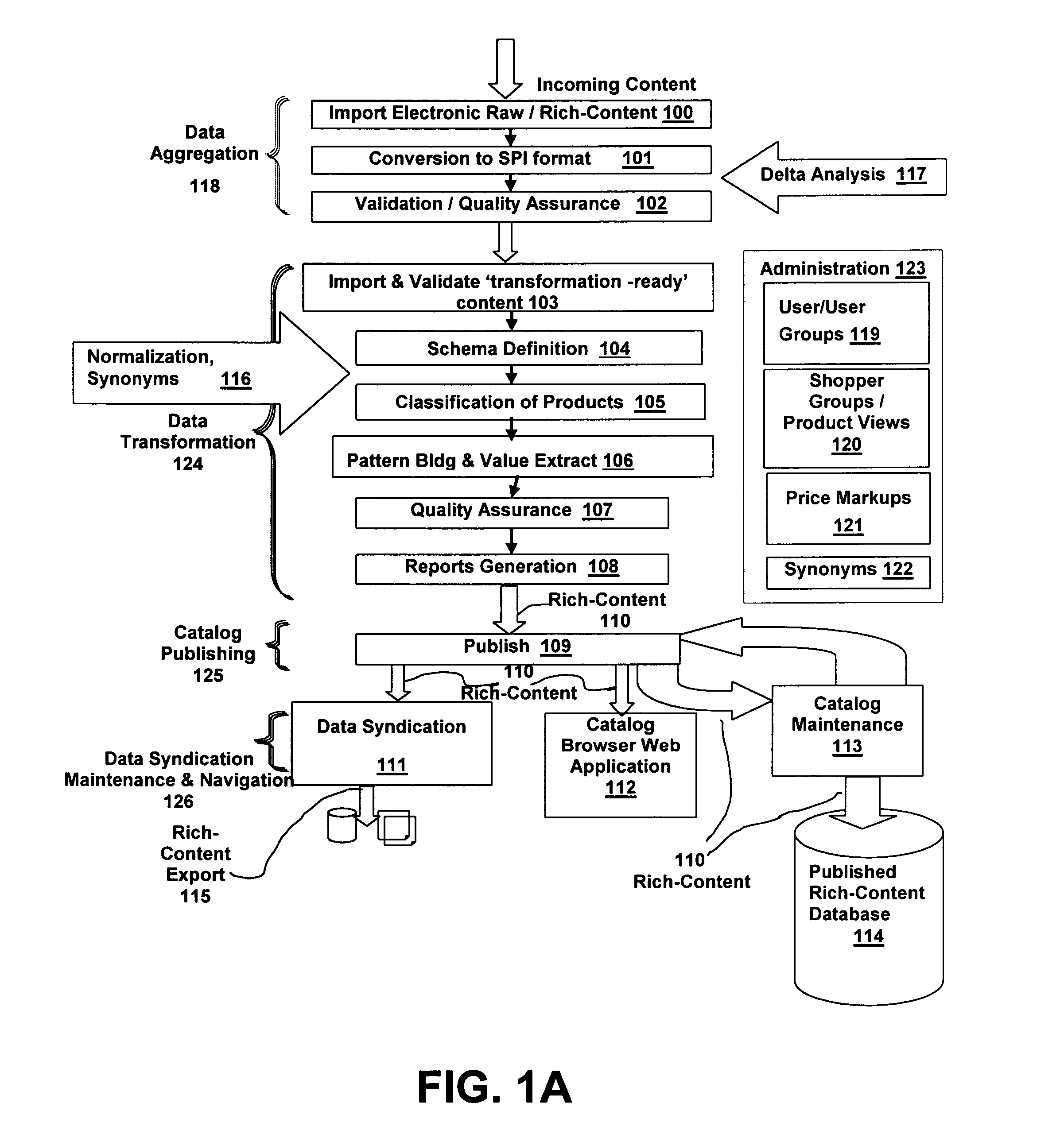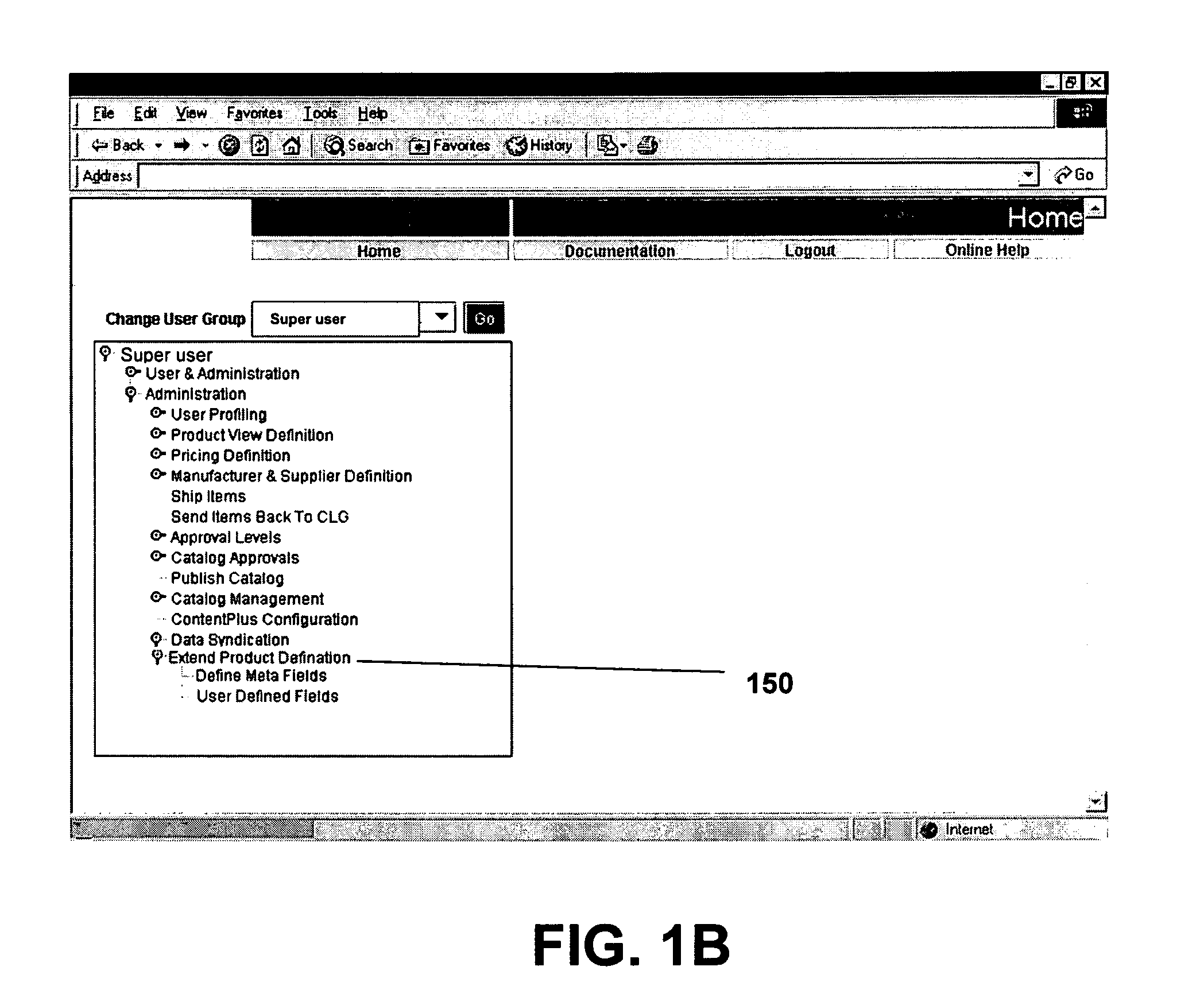System and method for user creation and direction of a rich-content life-cycle
a lifecycle and user technology, applied in the field of rich content data item lifecycle system and method, can solve the problems of poor data quality, costing all, loss of value-added value, etc., and achieve the effect of ensuring the goal of a procuring organization is not compromised and the highest possible quality
- Summary
- Abstract
- Description
- Claims
- Application Information
AI Technical Summary
Benefits of technology
Problems solved by technology
Method used
Image
Examples
Embodiment Construction
[0102]The present invention is a system and method for User definition and direction of a rich-content life-cycle by selecting at least one stage from a group consisting of at least one pre-defined stage and enhancing the functionality of the selected stage by selecting at least one function from a group consisting of at least one pre-defined function.
[0103]In a preferred embodiment, a life-cycle of rich-content starts with raw product item data, and includes at least one of the of the following steps[0104]Defining at least one schema for organizing the data;[0105]Importing the data into a holding place for data cleaning and enhancing;[0106]Using pattern-matching rules to map the data into the defined at least one schema;[0107]Cleaning the data to remove unwanted elements;[0108]Transforming the data into standardized formats and representations;[0109]Adding meta data that facilitates the future access to, and relevance of, the data;[0110]Adding related additional information such as...
PUM
 Login to View More
Login to View More Abstract
Description
Claims
Application Information
 Login to View More
Login to View More - R&D
- Intellectual Property
- Life Sciences
- Materials
- Tech Scout
- Unparalleled Data Quality
- Higher Quality Content
- 60% Fewer Hallucinations
Browse by: Latest US Patents, China's latest patents, Technical Efficacy Thesaurus, Application Domain, Technology Topic, Popular Technical Reports.
© 2025 PatSnap. All rights reserved.Legal|Privacy policy|Modern Slavery Act Transparency Statement|Sitemap|About US| Contact US: help@patsnap.com



